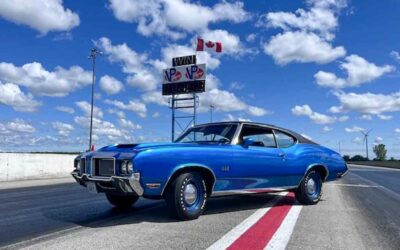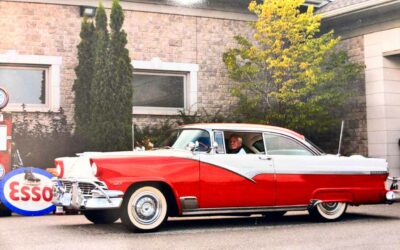
Written by John Zehr
The general insurance market goes through cycles that are known as “soft markets” and “hard markets”. I tend to think of it as a comparison to the water levels in the Great Lakes, interest rates in the general economy or investment performance in the stocks and bonds equity markets and the global price of oil. Somehow, I also think these comparatives are somehow linked.
In the insurance soft markets, insurance companies tend to have a large appetite for accepting risk and preferred or lower than otherwise rates. In hard markets, insurance companies tend to have a far lesser appetite than a soft market for accepting risk and there is a trend to higher rates.
For many years there was a general observation and understanding that the Great Lakes cycled from their low levels to peak levels every 7 years. This was supported by the US Corps of Engineers in either their published tables or predictions. Interesting, in my earlier years as an insurance broker (I have been at Zehr Insurance Brokers for 40 years), we tended to swing from soft to hard markets around every 5 – 7 years also. Where soft markets were extended, as claims costs increased for insurance companies and profitability was eroded, such losses were offset with well performing investment portfolios, thus it was less important to have strict underwriting practices. If they lost money paying claims, they made it up with investments. Back in the mid to late 1980’s, it was common to see 18% interest rates. Imagine the return on investment you could make on a GIC that had no equity risk and paid you that much. I remember purchasing a 1981 Buick Regal and I financed it at 14.2% with General Motors Acceptance Corporation (GMAC) and thought I had a good deal. At today’s interest rates, it is hard to imagine society even coping with those interest rates – but it could happen again. There are trends and swings in all the markets.
The price of oil is a market indicator in that I have observed when the price of oil is high, the equity markets do well. Today, oil is nowhere near it’s peak and yet our equity markets are high as ever – what is going on there? But in the insurance company investment portfolios today, investment returns are at record lows. Interest and bond rates that were high, even 10 year instruments have cycled into current rates – you do well to get 2% on a GIC, and stocks that are held have often been purchase at current high values – thus the opportunity to divest and realize gains is minimized. Investment income is not contributing much to underwriting losses the insurance industry is seeing. Insurance must be priced for the pure risk, not less than pure risk plus investment income – there isn’t much there.
I will add a contributing factor to my comparison of lake levels. Is it changing weather patterns that have caused the lake levels to have recently peaked? So much for the 7 year cycle as 3 years ago Lake Huron was down to around the 1966 levels and this year it peaked to what the prior peak had been in 1986 – a swing of several feet in only 3 years. Today the 100 year storm seems to be coming almost every year in some fashion or another. Insured weather events are slicing profits from the insurance industry like never before.
How long could anyone run a business if they were paying out $115 for every $100 they took in?
During the last 12 year soft market, I saw insurance companies offer increased insured perils, broader coverage extensions that made one insurance company’s products more attractive than the others, many necessary coverage features which traditionally were charged for just thrown in for free, and new competition in some market sectors that traditionally were much more stable than others, also joining the competition band wagon in an effort to gain market share.
At a time when investment returns were deteriorating, Canada and the globe had been directly affected by increased severe insured weather events, and we were in the bottom of the soft market, we also experience political interference in the free market influences that in the past tended to keep the 7 year cycle in check. In 2015 the Ontario Government ordered a 15% automobile insurance rate rollback that was to be achieved over 2 years. This was at a time when we were seeing run-away costs arising out of both bodily injuries and an increased frequency of total losses on cars themselves as cars became more sophisticated and expensive to repair.
The ordered rate rollback was imposed on the insurance market without realizing the mounting losses and without any automobile insurance product reform that might have saved the industry some costs. This is on the backs of the heavily legislated pricing models where the Financial Services Commission of Ontario carried a mechanism whereby all rates and rules must be approved. Companies may not just make underwriting and pricing changes as they did in the free market when I started in the business. It is a very cumbersome environment.

In the last hard market prior to it going soft 12 years ago, in commercial lines I saw insurance companies commanding significate rate increases. The challenge then was to get the customer’s insured “lines or capacity needs” placed in the market. So if an insurance company required a 25 – 30% increase in rate but they offered renewal terms, I went to most customers and recommended they accept those terms. Insurance companies were not anxious to undercut each other as the generality of the market was to get rates up and the balance sheets fixed. In some ways, the hard market today is worse. I have had several customers who have enjoyed stable business insurance for many years who were simply let go by their insurance company because the insurer decided that “the risk no longer met their target class of business”. Imagine – you’ve been with XYZ company for 20 years and you have had no claims – none. We are offered an “experience letter” from the insurer with a notice of non-renewal. The letter says who the customer is, how long they have been insured, no claims – great client. It doesn’t make any sense. Believe me, the customer would far rather had me bring them a rate increase rather than sorry I can’t get that for you anymore from “your company” and we’ll have to go to the hard market with your business as a new customer. In comes the 30% premium increase if they are lucky.
Better-off with a rate increase as-is, rather than starting off as a new customer in the hard market at a 30% premium increase, minimum.
Many of our new employees at Zehr have never experienced a hard market before but they will be better competent brokers at the end of it because they serviced their customers and everyone got through it. Personally I always liked a hard market because my years of experience could be called upon to get through the challenging situations. I have less chance of a new broker beating me on price when they have not had a chance to gain experience that no often is required to best serve our customers. I’ve been able to pass my experiences onto others when conditions are at their worst.
A continuing volatile and cumbersome environment.
The lake levels, investment markets, the price of oil and the insurance business will all continue to trend up, down, soft and hard, even in the midst of increase governmental regulation, for the foreseeable future. I’m sure of that.
Thanks for reading.
John Zehr







